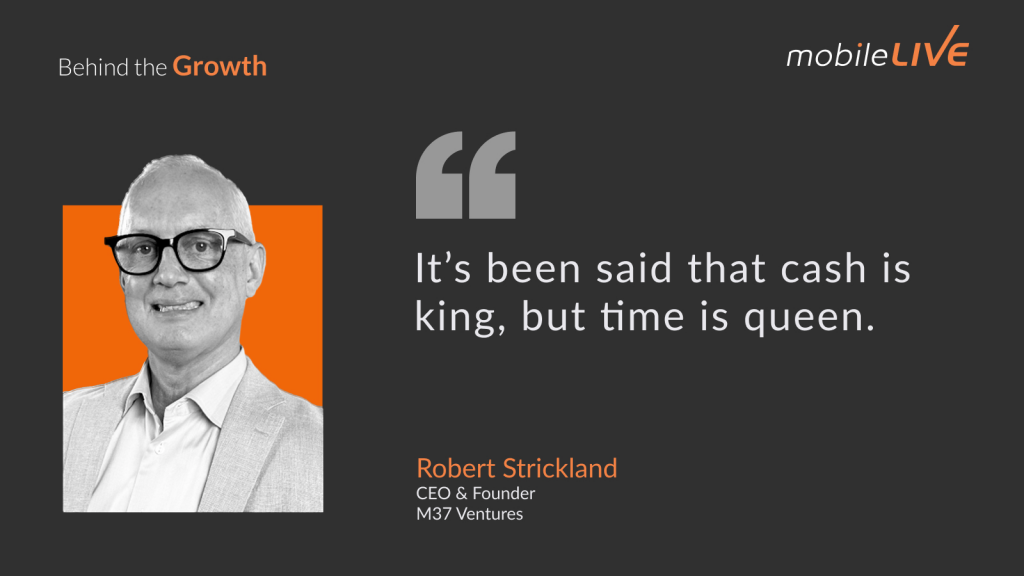Key Insights
Hybrid Cloud Models are Driving Data Center Evolution
Hybrid cloud solutions are at the forefront of modern data center strategies. Robert Strickland emphasizes how the industry has moved from on-prem to cloud, and now back to hybrid models. The flexibility of hybrid cloud allows companies to balance scalability with cost control, enabling them to optimize their data management and performance. As more companies adopt this approach, the role of data centers is evolving, with massive infrastructure investments being made to support both cloud and on-prem needs. Strickland highlights that while ten years ago data centers were thought to be a dying trend, they are now crucial in the new landscape of data management and AI-powered innovation.
Talent and Innovation Must Align in a Post-Pandemic World
The pandemic has reshaped the way businesses think about talent acquisition and innovation. Strickland points out that finding and managing talent is one of the most persistent challenges in today’s market, especially as remote work preferences grow among younger professionals. He stresses that innovation needs to focus on reducing friction in organizations and creating environments where teams can thrive. Post-pandemic, companies must learn to navigate a hybrid workplace while still driving growth and maintaining stability. Strickland advises that leadership must embrace flexibility in both technology and talent strategies to stay competitive in this new landscape.
AI is Fueling a Data Revolution
Strickland describes AI as a Ferrari, with data being the fuel that drives it. As AI adoption grows, businesses are forced to confront the complexities of data security and infrastructure. Strickland explains that many companies are still grappling with how to organize and secure their data in ways that allow them to fully leverage AI’s potential. He sees the future of innovation tied closely to advancements in data security, with businesses needing to prioritize both offensive and defensive strategies to protect their most valuable assets. Strickland also discusses how private networks and AI will continue to transform industries, making data management and security more important than ever.

Episode Highlights
The Evolution of Data Centers and Hybrid Cloud Strategies
Robert Strickland discusses the evolution of data centers, highlighting how businesses have shifted from on-premises to the cloud, and now to hybrid cloud models. He explains that data centers, which were once predicted to become obsolete, are now critical to modern technology infrastructure. These hybrid cloud setups offer flexibility, enabling businesses to balance costs and scalability while meeting the demands of new technologies like AI.
“Ten years ago, everyone said data centers were dead… Now, massive data centers are being built to support hybrid models that mix on-prem and cloud.”
Navigating Talent and Innovation in a Post-Pandemic World
Strickland emphasizes the post-pandemic challenges businesses face in talent acquisition and management. Remote work preferences have shifted workplace dynamics, particularly among younger professionals who prefer flexibility. He discusses how innovation should focus on reducing friction within organizations, making it easier for teams to work together effectively, whether they’re remote or in-person. Leadership needs to adapt to this new normal while fostering an environment where innovation can thrive.
“Talent acquisition has become a persistent challenge, especially in the post-pandemic world where remote work preferences have reshaped workplace dynamics.”
The Importance of Balancing Budgets Between Cloud and On-Prem
Strickland highlights the complexity of budgeting in a hybrid world, where cloud and on-premises infrastructure both play important roles. He warns that cloud costs can easily spiral if businesses don’t plan carefully, suggesting that many companies might need to return to hybrid models to optimize costs. As cloud solutions chew through operational expenses (opex), it’s crucial to balance capex and opex effectively, especially in light of emerging technologies like AI.
“Cloud works, but it can chew up your budget quickly. Companies are rethinking hybrid models to balance their operational and capital expenses.”
Globalization and Cross-Border Collaboration
Strickland highlights the growing importance of globalization and cross-border collaboration for business growth. He explains that even companies operating domestically are finding that they must engage with international markets to remain competitive. Understanding how work is done globally, and building and maintaining relationships across borders, are essential for modern businesses. Strickland stresses that executives must embrace this global mindset to succeed in the evolving market.
“You can’t succeed in today’s world without acknowledging the global nature of business. Cross-border collaboration is crucial for innovation and growth.”
These major parts reflect critical themes from the discussion, offering insights into technology, leadership, and globalization.







